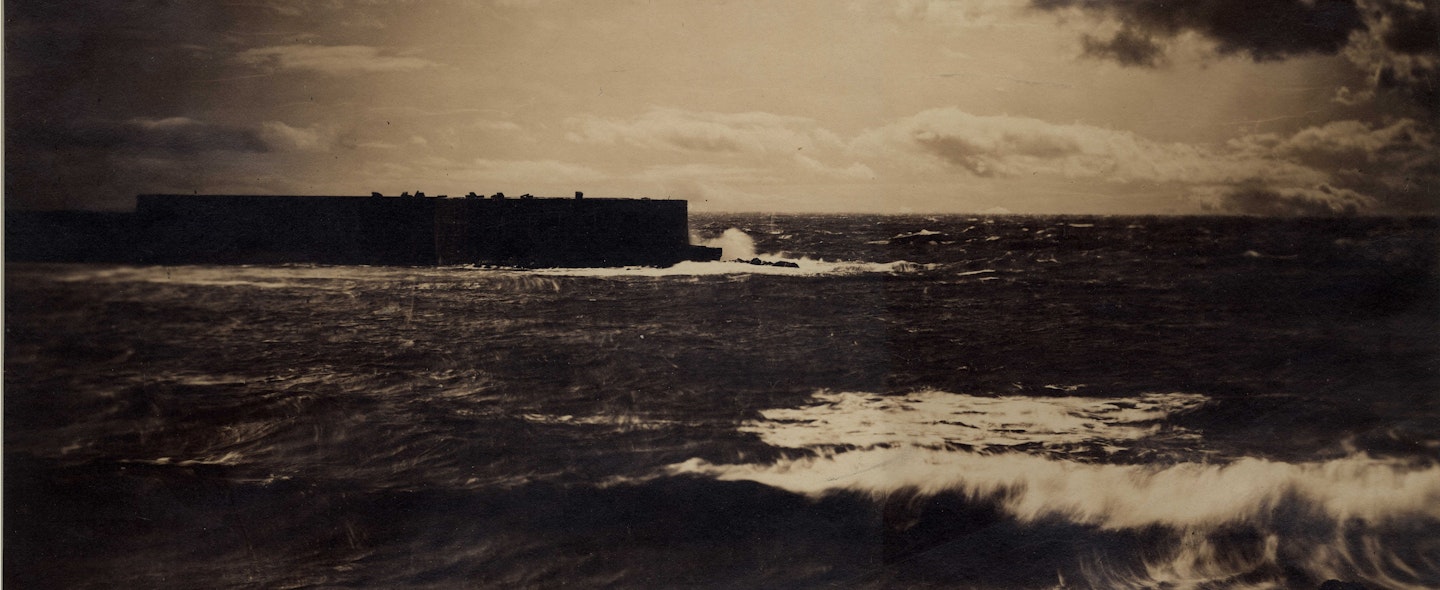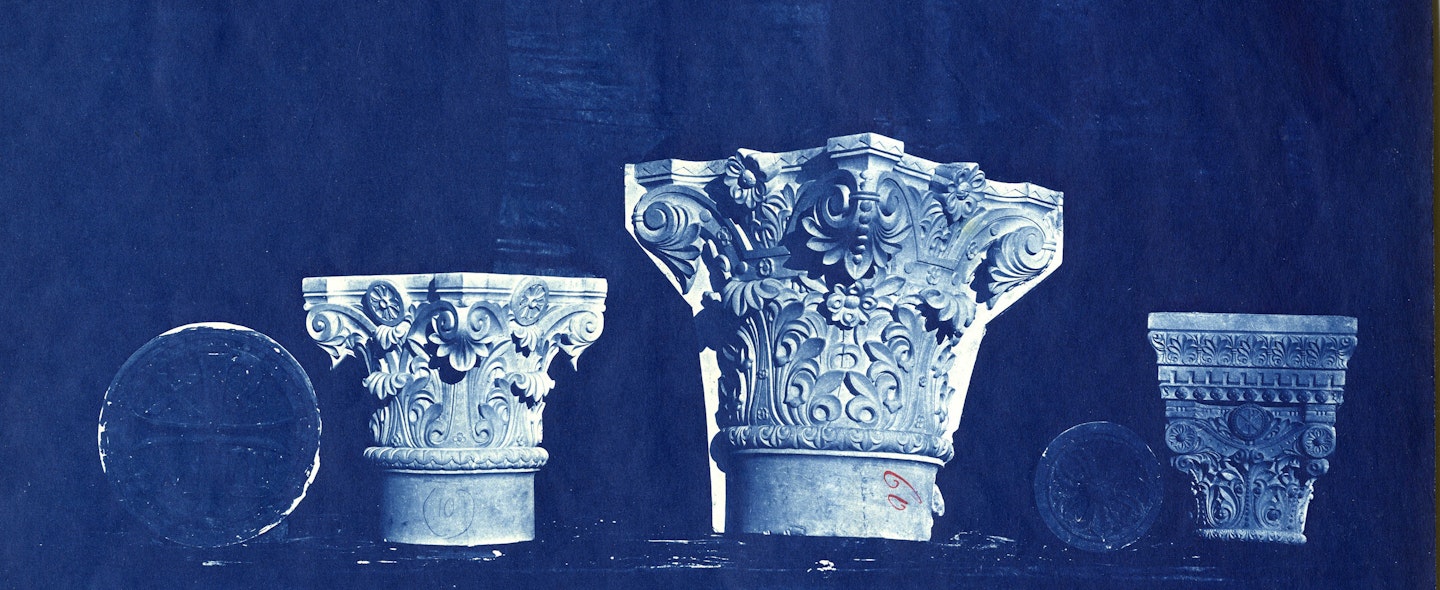Exhibition
From Today, Painting Is Dead: Early Photography in Britain and France
February 24 – May 12, 2019
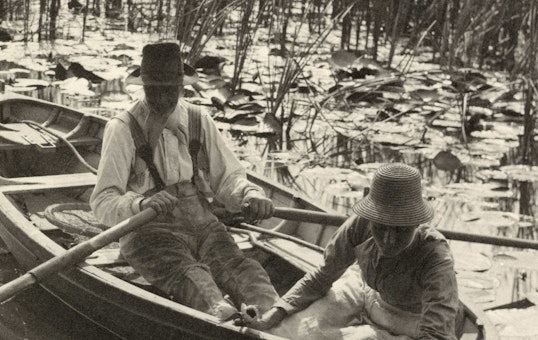
Peter Henry Emerson. Gathering Water Lilies (detail), 1885. Platinum print. Collection of Michael Mattis and Judy Hochberg
About the Exhibition
On first seeing a photograph around 1840, the influential French painter Paul Delaroche proclaimed, “From today, painting is dead!” The story sounds far-fetched, but it captures the anxieties that surrounded the technology when it first emerged in the mid-19th century.
At the time of photography’s invention, painting was (and had long been) the primary medium for recording images. The art establishment had rigid guidelines for style and an official hierarchy of subject matter: First came history paintings, which sought to impart moral messages. Portraiture was next. Then came scenes of daily life, or genre paintings. Landscape and still life ranked lower still.
The nearly 250 iconic pictures in this exhibition are organized by these official categories, illuminating the possibilities and challenges that amateur and professional photographers faced while experimenting with their new medium. In each section, you’ll see how early photographers both embraced and questioned the conventions of the dominant tradition; how technical limitations hindered their attempts to imitate painting; and how, in the process, they invented new ways of seeing the world, setting the stage for our modern visual culture.
History
From the 17th century until the end of the 19th century, the fine arts academies of Paris and London considered history painting to be the supreme visual art. Large-scale, theatrical pictures illustrating stories from history, mythology, or the Bible sought to enlighten the populace.
Technical limitations prevented early photographers from taking pictures of this kind. (Long exposure times, for example, made it impossible to capture complicated multi-figure scenes.) But as cameras became faster and easier to carry, photographers realized they could narrate important events as they happened. Increasingly, in the 1870s and 1880s, photographs accompanied news stories in the press.
Portraiture
By the end of the 18th century, Enlightenment thought (which centered on reason and intellect) had increased the popularity of portrait painting. Successful artists sought to convey a sitter’s personality, or inner life, in addition to capturing physical likeness.
Early photography struggled with such nuance. The daguerreotype, the first popular photographic portrait medium, required an exposure time of several minutes to produce a detailed picture. Sitters had to remain perfectly still, in bright light, for extended periods of time. They often appeared rigid and expressionless in the resulting images.
Nonetheless, for a growing middle class who could not afford painted portraits, photographic likenesses were in great demand. Though they had only entered the market in 1839, daguerreotype studios in Paris were producing more than 100,000 portraits a year by the early 1850s.
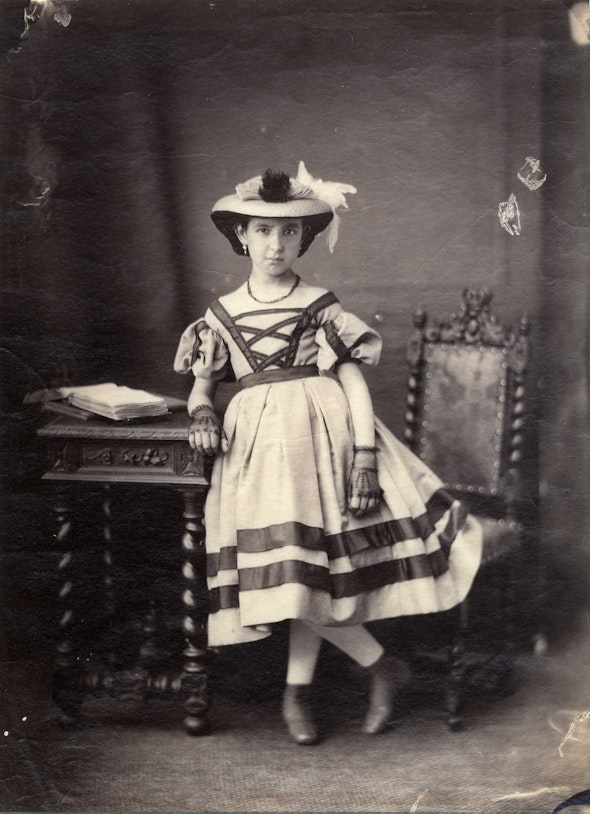
Marie-Alexandre Alophe. Untitled, c. 1859. Albumen print from collodion-on-glass negative. Collection of Michael Mattis and Judy Hochberg
Genre
In the early 19th century, genre paintings sought to evoke simple emotional responses. Because such pictures focused on ordinary moments rather than heroic narratives, fine arts academies ranked them below history paintings and portraits of distinguished individuals.
Genre painting readily translated to photography. Scenes of daily life could easily be staged for the camera, which is why they were among the earliest multi-figure compositions captured by photographers. Middle-class consumers—who once would have bought etched or engraved reproductions of paintings—decorated their homes with these sentimental scenes.
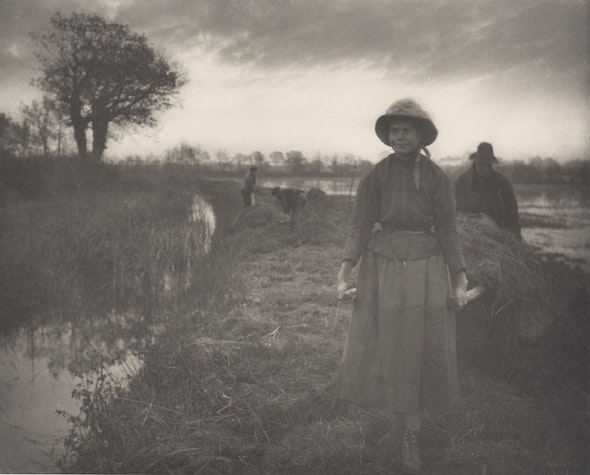
Peter Henry Emerson. Poling the Marsh Hay, c. 1886. Platinum print. Collection of Michael Mattis and Judy Hochberg
Landscape
Despite its modest status in the art world, landscape was a very important subject for early photographers. Working outdoors provided the abundant light that their processes required, and nature and cityscapes were easier to capture than people, whose movements made for a blurry image.
To push the boundaries of the new medium, photographers developed more expressive ways of portraying their surroundings. These developments affected painted landscapes, which became more evocative and less concerned with strict visual fidelity, boosting their popularity.
Still Life
Still life paintings typically combined artfully arranged objects—including pottery, food, flowers, and other items from the natural world—to convey symbolic meaning. Wilting flowers, for example, would have been understood as a reminder of the brevity of life. Still life called on a painter’s skill to fool the eye and had been popular since the 1600s, but the fine arts academies viewed it simply as mimicry.
Early photography could have displaced painting as the preferred mode of making still life images. The qualities associated with a successful still life—detail, clarity, little evidence of the artist’s hand—were easily and automatically achieved with a camera. Instead, the medium’s potential for seamless realism seems to have led more ambitious photographers to other types of subject matter.
Exhibition Highlights
- Original calotypes by William Henry Fox Talbot, including still lifes, portraits, landscapes, and street scenes from both England and France.
- The earliest war photographs, taken of the Crimean War by Roger Fenton, including his iconic The Valley of the Shadow of Death as well as the 11-plate panorama of Sebastopol.
- An 1844 daguerreotype of Jerusalem—one of the first of the city—by Joseph-Philibert Girault de Prangey.
- A full-plate daguerreotype of the Fontaine des Innocents in Paris by Baron Jean-Baptiste-Louis Gros from the 1850s.
- Some of the earliest existing travel photographs of the Middle East, Southern Europe, Africa, India, Burma, Ecuador, Mexico, and New Zealand.
- Portraits by Nadar, Paris’s great portraitist and larger-than-life personality, with subjects ranging from literary legends—including an oversize 1885 deathbed portrait of Victor Hugo—to a Japanese delegation to France (1864). Also included are his 1860s photographs of the Paris catacombs and sewers, which represent one of the first uses of artificial lighting in photography.
- Pre-Raphaelite allegorical portraiture by Julia Margaret Cameron.
- French physiologist Étienne-Jules Marey’s 1880s motion studies of athletes, which prefigure the development of motion pictures, much like Eadweard Muybridge’s motion studies in the US.
- Seascapes, landscapes, photographs of military maneuvers, and other works by Gustave Le Gray, the leader of the 1850s French movement of fine art photography.
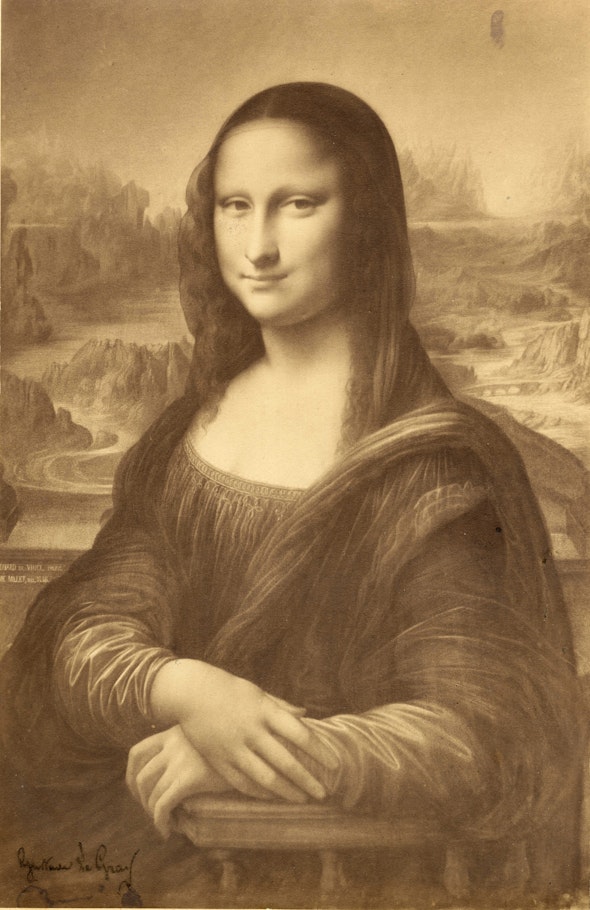
Gustave Le Gray. The Mona Lisa, After a Drawing by Aime Millet, 1854–1855. Albumen print from collodion-on-glass negative
Exhibition Organization
All works are from the collection of Michael Mattis and Judy Hochberg. This exhibition was organized by the Barnes Foundation in association with art2art Circulating Exhibitions and curated by Thom Collins, Neubauer Family Executive Director and President of the Barnes.
This exhibition was produced as part of a new educational venture between the Barnes and the University of Pennsylvania, led by Collins and professor Aaron Levy, with curatorial contributions from students in the 2018 Spiegel-Wilks Curatorial Seminar Ars Moriendi: Life and Death in Early Photography.
Sponsor
This exhibition is sponsored by:
The Jill and Sheldon Bonovitz Exhibition Fund
The Horace W. Goldsmith Foundation
Aileen and Brian Roberts
Critical support for the exhibition comes from contributors to the Barnes Foundation Exhibition Fund:
Joan Carter and John Aglialoro • Julia and David Fleischner • Leigh and John Middleton • Jeanette and Joe Neubauer
John Alchin and Hal Marryatt, Christine and Michael Angelakis, Jill and Sheldon Bonovitz, Lois and Julian Brodsky, N. Judith Broudy, Laura and Bill Buck, Gloria and John Drosdick, Eugene and Michelle Dubay, Lisa D. Kabnick and John H. McFadden, Marguerite and Gerry* Lenfest, Victoria McNeil Le Vine, Leslie Miller and Richard Worley Foundation, Hilarie and Mitchell Morgan, Kay and Michael Park, The Rittenhouse Hotel, Adele K. Schaeffer, Katie and Tony Schaeffer, Dr. and Mrs. Eugene E. Stark, Joan F. Thalheimer, van Beuren Charitable Foundation, Kirsten White, A. Morris Williams, Jr., Michele Plante and Robert N. Wilson, Anonymous
*deceased

